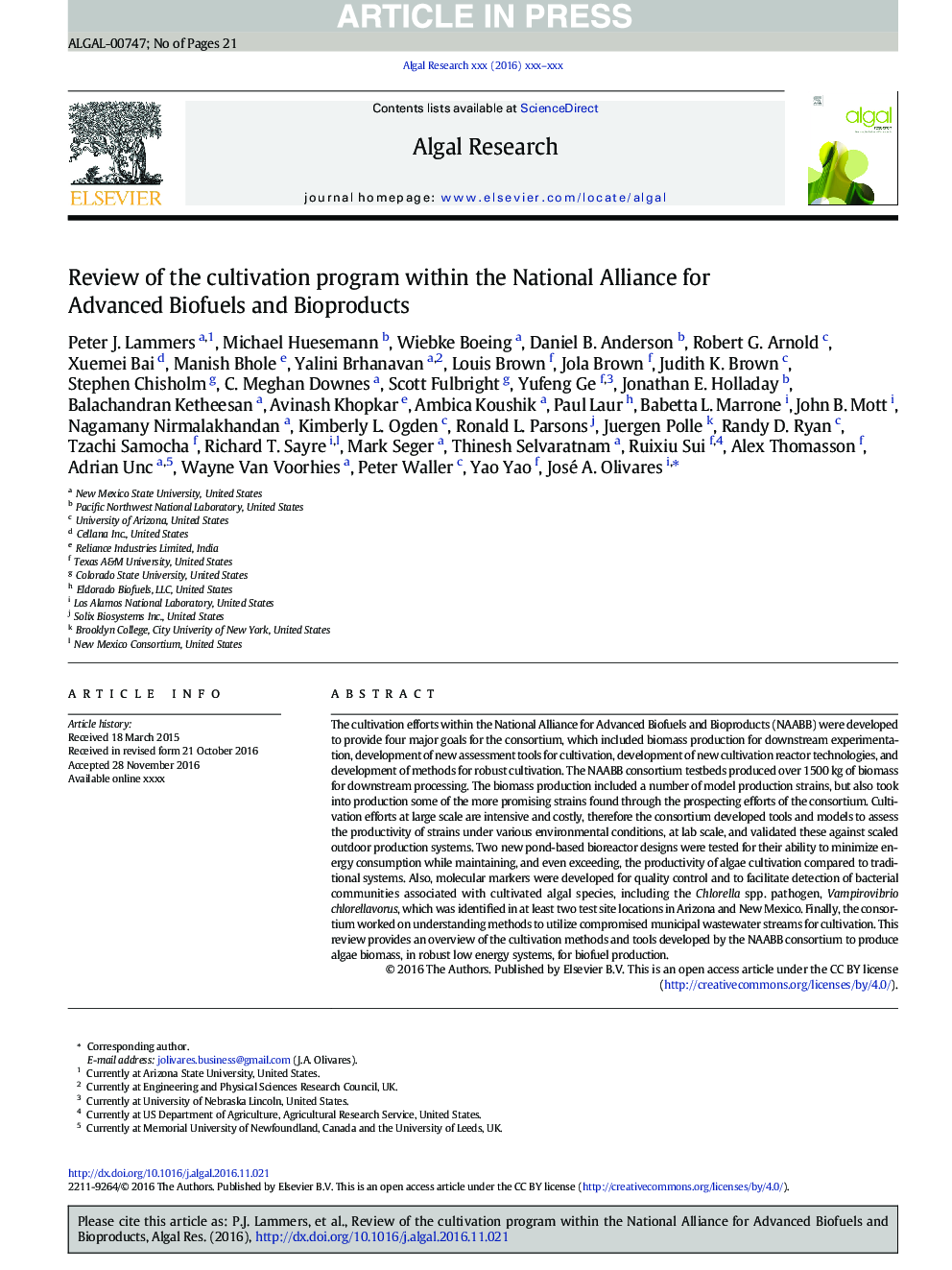| Article ID | Journal | Published Year | Pages | File Type |
|---|---|---|---|---|
| 5478431 | Algal Research | 2017 | 21 Pages |
Abstract
The cultivation efforts within the National Alliance for Advanced Biofuels and Bioproducts (NAABB) were developed to provide four major goals for the consortium, which included biomass production for downstream experimentation, development of new assessment tools for cultivation, development of new cultivation reactor technologies, and development of methods for robust cultivation. The NAABB consortium testbeds produced over 1500Â kg of biomass for downstream processing. The biomass production included a number of model production strains, but also took into production some of the more promising strains found through the prospecting efforts of the consortium. Cultivation efforts at large scale are intensive and costly, therefore the consortium developed tools and models to assess the productivity of strains under various environmental conditions, at lab scale, and validated these against scaled outdoor production systems. Two new pond-based bioreactor designs were tested for their ability to minimize energy consumption while maintaining, and even exceeding, the productivity of algae cultivation compared to traditional systems. Also, molecular markers were developed for quality control and to facilitate detection of bacterial communities associated with cultivated algal species, including the Chlorella spp. pathogen, Vampirovibrio chlorellavorus, which was identified in at least two test site locations in Arizona and New Mexico. Finally, the consortium worked on understanding methods to utilize compromised municipal wastewater streams for cultivation. This review provides an overview of the cultivation methods and tools developed by the NAABB consortium to produce algae biomass, in robust low energy systems, for biofuel production.
Related Topics
Physical Sciences and Engineering
Energy
Renewable Energy, Sustainability and the Environment
Authors
Peter J. Lammers, Michael Huesemann, Wiebke Boeing, Daniel B. Anderson, Robert G. Arnold, Xuemei Bai, Manish Bhole, Yalini Brhanavan, Louis Brown, Jola Brown, Judith K. Brown, Stephen Chisholm, C. Meghan Downes, Scott Fulbright, Yufeng Ge,
